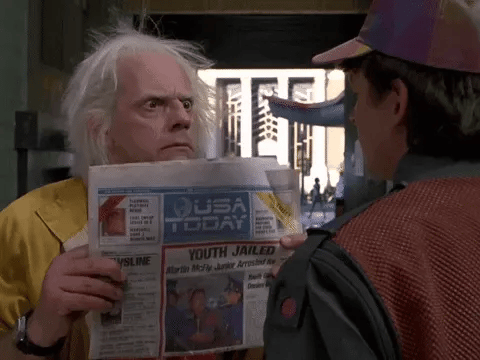As marketers (and digital experts) we sometimes use phrases but don’t understand their origins.
Above the fold is the upper half of the front page of a newspaper or tabloid, where an important news story or photograph is often located. Papers are often displayed to customers folded so that only the top half of the front page is visible. Thus, an item that is "above the fold" may be one that the editors feel will entice people to buy the paper. Alternatively, it reflects a decision on the part of the editors that the article is one of the day's most important. By extension, the space above the fold is also preferred by advertisers since it is the most prominent and visible -even when the newspaper is on stands.(Wikipedia)
A 2006 study by Jakob Nielsen found that 77% of visitors to a website do not scroll,[3] and therefore only see the portion of the website that is above the fold. In a more recent article by Amy Schade[4] and NNgroup it is stated that there is an 84% average difference in how users treat the content above and below the fold; as you might guess, there is a big drop off in attention below the fold. (Wikipedia)
So now that we know what above the fold is, and how it affects engagement, how can we take advantage of above the fold digitally?
Homepage:
The homepage is a prime example of a place to truly work to provide a clear and specific call to action.
70% of small business websites lack a call to action on their homepage (sweor.com)
More importantly, what is showcased above the fold on your homepage? This section of your website should draw a user in, provide either a leading statement or your brand’s unique selling proposition. Drawing a user’s attention can be achieved through multiple ways.
First, start with strong visuals like video or photographic content. This should make visitors envision how great their lives will be if they use your product or service.
Second, include a strong statement that is leading - ex. “Nutrition through rare, life-extending ingredients” or questions - Ex. “Hate spending so much on vitamins? Us too.”
After a strong visual combined with a statement or question, you then need to provide some clear call to action. Here are some great examples of a clear call to action:
-
Sign Up Now
-
Sign Up in 2 Minutes
-
Buy Now
-
Get My Free Variety Pack
-
Get My Free Product
-
Try For Free
-
Get Mine Now
These are just some examples of how you can impact the majority of the web traffic that is visiting your website. Lead them in with something strong, so they’re encouraged to continue scrolling below the fold.
Landing pages:
Landing pages, or any page to which you are driving traffic, should always contain some clear call to action without having to scroll.
A Google study showed that ads appearing above the fold had a 73% visibility, whereas those below it had just 44%. (abtasty.com)
Keep in mind, landing pages, unlike homepages, are created for specific campaigns or objectives. The benefit? These pages are not intended to be ambiguous nor meet the needs of many. These pages should be created to meet the needs of a few, your target segment.
Create pages specific to ad sets, or even specific ads. Continue the story you created in the advertisement and provide more information. This is your opportunity to be hyper specific with clear statements and call to actions. All in the name of higher conversion rates.
Furthermore, be sure to be testing layouts across all devices. With responsive design, layouts and elements may be moved around a bit. Be sure that you design all landing pages with a mobile-first approach, then the focus should be on the desktop, and finally the tablet. Typically, if a design works for mobile, it will work for the other two.
Email:
Above the fold doesn’t only apply to webpages, emails are just as important! If not more, with average open rates around 20%. Let’s bring this a bit further by providing an additional perspective to above the fold: From, Subject Lines, Preview Text, and Content.
From: Seems simple right? Your brand. But you can easily increase open rates by making this more personal. I have seen successful campaigns that utilize a specific person writing the email. For example, the founder, the CEO or even a customer service representative - by their name.
Subject Lines: an obvious and significant variable in increasing and decreasing open rates. Keep in mind - on mobile you typically only have 41-50 characters to show.
Preview Text: a typically forgotten aspect, but this addition gives you a second opportunity to provide additional information. Don’t copy a subject line or the first text in your email. Use this as an opportunity to provide more value add. Again, not many characters to play around with, so work on your brevity.
Content: As with our homepage or landing pages, use this opportunity to draw a user in. Create excitement. Beautiful content. And as always, a clear call to action.
Lastly, as with your homepage and landing pages, be sure to include a clear call to action within the top 15% of your email. If the above is done properly, 90% of your subscribers will already know what you’re offering in your email. Make it as easy as possible for them once they open.
We may be far from the days of physical newspapers, but the concept of above the fold still applies to many aspects of our modern day lives.
Now go and grow.
-J






Leave a comment
This site is protected by hCaptcha and the hCaptcha Privacy Policy and Terms of Service apply.